The Mail – a personal way of reaching out
By Robert Gumpert
“There are few government institutions more comforting than the United States Postal Service. The high point of my day (even more so during the pandemic) is receiving physical mail by a human, mail-bearing being.” Steven Heller, in PRINT Aug 16
My thanks goes out again to Christina Perez and Peter Olney for choosing note card set 3 and donating to Swing Left.
The Stansbury Forum could not agree more! In these times of pandemic, lockdowns, and hate spewing neo-fascists, we think sending a personal note to friends, family, loved ones, and more is a way to bring a bit of hope and community into our lives.
Back in late July the Stansbury Forum offered a set of “note cards” in return for proof of donation through one, or more, of the avenues offered by Swing Left.
It was a big success and raised over $1000 for Swing Left. Now there are just short of 70 days left before the election, and because reaching out to friends, family and even strangers with a little note is a good thing to do, we are offering 3 note card sets which you can see below. There are 2 sets of black and white portraits of American workers and one set of color scenes I have photographed while walking around during the pandemic.
Each set consist of 25 cards, 25 envelopes and come in a box.
If you are one of the first 4 to respond and provide proof of your $250 donation to any of the Swing Left donation methods (such as the Senate Fund), made after 26 August, and we will send you the note card set of your choice.
Robert Gumpert, Peter Olney. Co-editors The Stansbury Forum
Worker Set 1
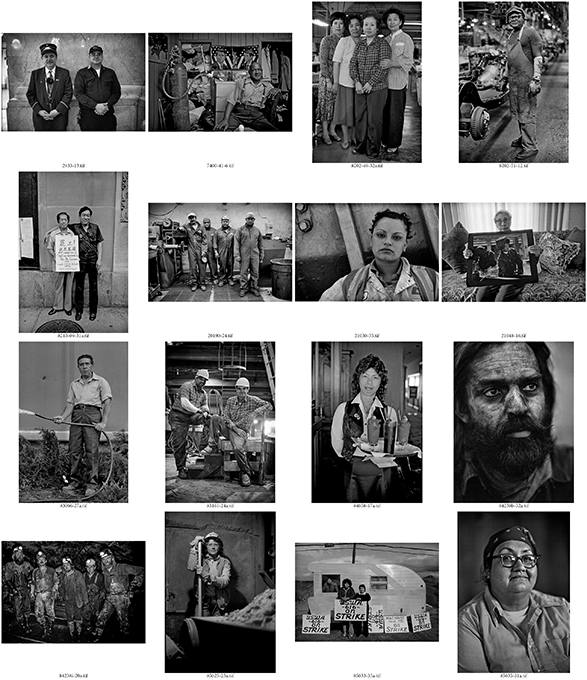
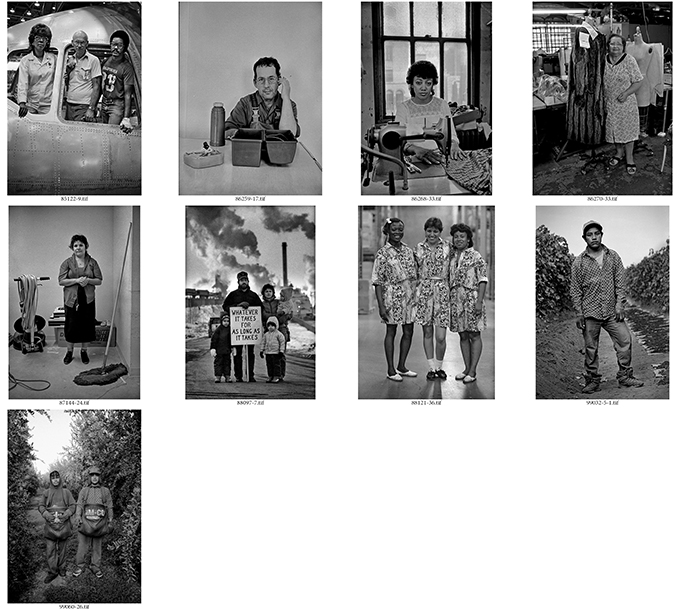
Worker Set 2
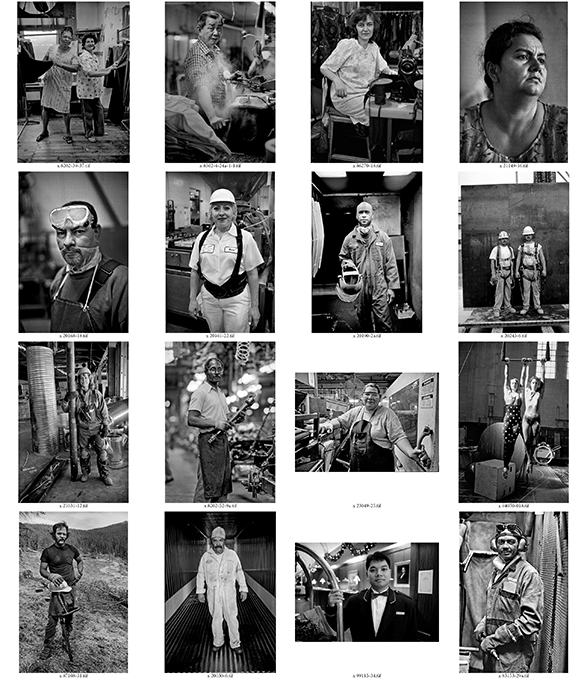

Walk Around Set


.
Remembering Eric Hoffer, working-class philosopher
By Howard Isaac Williams
.
I first met Howard Williams in early 1998 when he and a group of San Francisco bike messengers showed up at our International Longshore and Warehouse Union (ILWU) headquarters on 1188 Franklin Street. He and his comrades were members of the SF Bike Messengers Association and they wanted to join the ILWU. We told them that we would gladly affiliate the SFBMA and give them office space in our warehouse Local 6 on 9th street. But we all committed to working together to win bargaining rights for messengers – bikes, cars and walkers – in the Bay Area. Howard worked tirelessly with us to organize, and we were successfull in bringing two companies under contract: Pro Messenger and Ultra Ex. The collaboration between ILWU and the messengers also resulted in a “peace” agreement between Muni drivers of the TWU and the bikes which deescalated potential deadly clashes between the two groups. Many messengers think that the ILWU presence added a modicum of self respect and self worth that reduced rampant substance abuse in the bike community.
Howard remains an avid supporter of the ILWU and a striking figure on a bike with his distinctive head gear, beard and lanky physique. He is still a working messenger. He is also a thinker about many topics: politics, religion and philosophy. We are proud to run his essay on Eric Hoffer another ILWU member who had a lot to say about a lot of things. This article originally appeared in the June, 2019 issue of The Dispatcher, the newspaper of the ILWU.
.
This year marks the 60th anniversary of the writing of Working and Thinking on the Waterfront by Eric Hoffer (1898-1983), an author and active member of International Longshore & Warehouse Union Local 10 from 1943 until his retirement in 1964. Working and Thinking was the result of a journal Hoffer kept from June 1, 1958 to May 21, 1959. In his observations, Hoffer commented on a variety of personal matters and public issues, including the manner of social change. His statements that “Drastic change juvenilizes” and can even cause “dehumanization” may help explain Internet trolls, social media mobs and the polarization that now afflicts American politics and journalism. His 1958 claim that “If an American businessman had displayed a fraction of such megalomania [of foreign tyrants] he would have been made the laughingstock of the world” leaps off the page when we consider that such a businessman now occupies the White House.
Unfortunately, Hoffer’s insights into social change are limited to analysis of change in general. Nowhere in Working and Thinking does he mention the approaching containerization that would soon haunt the futures of longshore workers.
Hoffer was a working-class philosopher. Among ourselves, working people have always discussed issues of the day or of eternity with perspectives and insights unfamiliar to many professional scholars. Our wisdom rarely breaks out of our ranks. In addition to having limited time to write or otherwise express our experiential wisdom, we face prejudices from publishers and other cultural gatekeepers who often stereotype us. Hoffer was one exception who managed to break into the wider culture with The True Believer, his 1951 study of fanaticism. This book launched Hoffer on a successful career as an author. He wrote nine more books along with magazine articles and a syndicated newspaper column. Yet unlike most successful working-class writers and artists he never quit his “day job.” Indeed, in Working and Thinking, he credited his longshore work as an assistance to his creativity. And he used the flexible schedule made possible by the hiring hall to gain chances to write that workers in other trades did not have.
His statements about working people stand as vigorous assertions about our deeds and dignity. To Hoffer, “Honor Labor” was more than a slogan. It was an integral part of his artistic expression and daily life. In these times, media portrayals of working people are relatively few and rarely done with awareness or solidarity. Most newspapers and magazines no longer even print once obligatory Labor Day articles about working people and our unions. In contrast to today’s neglect of workers (especially those who do physical labor), Hoffer’s words from the past are a timeless affirmation of the inherent dignity of labor and a repudiation of postmodern corporate so-called values. Hoffer believes that in general, “common people have a better opinion of mankind than do the educated” and expresses “confidence in the competence of the run-of-the-mill American” while crediting “the masses” with the building of America. Much of this confidence comes from his experience in union meetings. And on the waterfront, he experiences “a strong feeling of belonging.” Hoffer does not over romanticize workers, either as individual persons or as a class; he finds shortcomings including some among himself and his colleagues.
The waterfront and America have changed much since the late 1950s. Rather than looking back nostalgically or endorsing all change uncritically, we might read Hoffer for what we can regain in order to face opposition to our basic rights as workers and as people.
…
What I know about stereotypes
By Molly Martin

A Bit of Introduction
The Black Lives Matter movement has brought national attention back to racism. Of course, the battle for equal rights has been going on for decades, for centuries.
Previous to affirmative action laws, the construction trades had been the providence of white males. People of color and women busted into the construction workplace in the 1970s after years of demanding access to well-paid union jobs. We walked onto the job site and into the union halls together and we stood up for each other, all of us fish out of water in the white male culture of construction.
We built a movement to gain access to this industry, going up against both employers and unions. We focused on union construction because these were, and are good jobs that pay good money. No education beyond a high school diploma is required. Apprentices go to school free while working and apprentice pay increases automatically. A union contract is a great leveler. We don’t depend on a boss to decide our pay rate. The Black woman painting the steel girders on the Golden Gate Bridge gets paid the same as the white man.
Just as with school integration, people of color and women have encountered discrimination, harassment and racist and sexist stereotyping in construction. But the fact that affirmative action regulations required contractors to hire us and union apprenticeship programs to include us made all the difference—testament to the power of the federal government having your back.
Stories in this essay refer to the time just as we were getting in—the early 80s. It was a time when stereotypes were continually being broken down and re-examined. All of us had to adapt to the colossal culture clash.
Has the culture of construction changed in the past 40 years? For both people of color and women, just our presence on the job has impacted the culture.
For women, the fact that sexual harassment is now against the law was a significant change for the better. Women of color still experience a double challenge as both racial and sexual minorities.
The demographic has changed in 40 years. Hispanic men now constitute more than a third of the union construction workforce in California. Women are still only a small percentage of union construction workers, about three percent. Asians are even less numerous at less than two percent. Black men have made some gains, although there is still a ways to go to reach equity. But we are there now, and we have made some headway in the union and apprenticeship structure.
Reagan killed federal affirmative action programs after he took office in 1981, but for the short time regulations were actually enforced, that brought more of us into the construction trades. We owe our jobs and careers in the trades to affirmative action. We still encounter discrimination, harassment and isolation, but if the laws and regulations had been enforced for even a few more years, the trades would be much more diverse.
California state and local affirmative action programs died after 1996 when the anti-affirmative action Proposition 209 passed. That law has made it difficult to demand equitable representation of Black, Asian and women workers. This November 3, Californians will have a chance to make programs like targeted recruitment legal again by voting yes on Prop 16, a constitutional amendment which will repeal Prop 209.
From this struggle we have learned that the arc of the moral universe is long. I don’t have faith that the arc bends toward justice but here are some indications that it might. Recently the ironworkers union international showed its support for female ironworkers by introducing a pregnancy leave policy, now being copied by other unions; the newly elected president of my San Francisco International Brotherhood of Electrical Workers union Local 6, is Ron Lewis, a Black man and a feminist; and I just learned that two workers were thrown off a job by the union for making racist remarks against Black coworkers. That would never have happened in my day.
.
What I know About Stereotyping
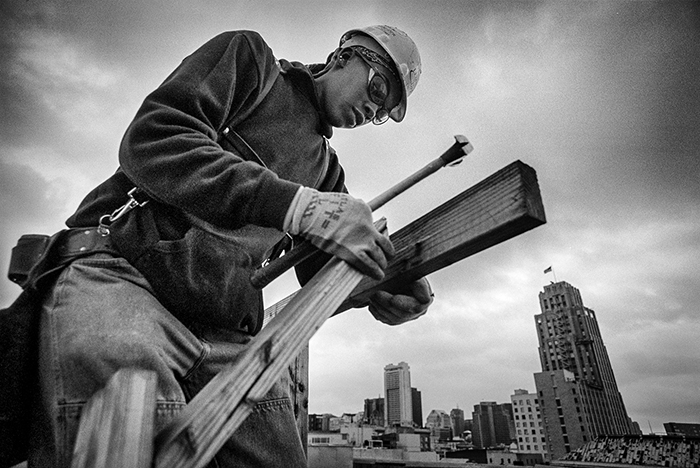
The culture of the construction site was manmade. No women had been involved in its creation and so we had to negotiate the best we could. I said to myself I had a father and three brothers, I should be able to fit in. I’d been a tomboy as a kid and thought I knew how to hang with males of the species. Every new job, each with a new group of guys, held new challenges.
I quickly learned that my coworkers thought women were incapable of doing the physically challenging work of construction. They brought to work a stereotype of women as stupid, whiny, useless, money-grubbing weaklings who needed a man to give them worth in the world. (Most of these guys were divorced and still angry at ex-wives). They repeated to me an old saying: If this work was easy, women and children could do it. Something told me that when they repeated it to each other, the word they used was not women.
“Cunt,” whispered the ironworker tying rebar next to me as I tied electrical pipe to it. Then he quickly moved on. After I got over the shock, here’s what I thought: “Ironworkers are a bunch of cowardly sexist dickheads.”
” A worker was welcomed into the construction culture in a backhanded manner. You didn’t know whether you were being dissed or included.“
My coworkers told me women weren’t good partners on the job because we couldn’t be trusted to hold up our end of a 300 pound piece of floor duct. We were all afraid of heights, we didn’t know how to swing a hammer and hit anything. We were just there to get a man. Our presence on the job would cost the contractor money since it took us twice as long to complete a task. When criticized we would cry, so they had to be careful what they said to us. (Too bad that didn’t translate to not insulting us.) Their worth was predicated on our worthlessness, our lack of merit. You are only as tall as the person you are stepping on.
I went to work each day with the objective of overturning the old stereotype. I was usually the only female on the job, and very conscious that I would embody a new improved stereotype. I worked hard but was careful not to work so hard that I’d be accused of breaking down conditions and brown-nosing the employer. I tried to work just as fast as they did, but not faster. I picked up my end of the floor duct and used lifting skills to save my back, while thinking to myself that nobody should have to lift 300 pounds of anything. I was not afraid of heights, but if I had been, I never would have admitted it. I never cried, even when I felt like it.
A worker was welcomed into the construction culture in a backhanded manner. You didn’t know whether you were being dissed or included. Race and ethnicity as well as gender were called out with jokes and put-downs. How one responded was noted. You were supposed to go along to get along.
The men could be empathetic while at the same time expressing homophobia, sexism and racism. I tried to come out as a lesbian whenever the opportunity arose because I was convinced this honesty made the job easier for me. On one job I worked with a traveler* from Arizona. We were assigned to tape connectors and boxes in the trailer while we waited for the deck to be readied for the electrical crew, so we had time to chat. He told me he and his wife were in town for a few months. She worked as a nurse in a hospital in Oakland and the place was overrun with faggots. She was disgusted. Here was my opportunity! I admitted to being a dyke and noted that fags were a lot more fun to work with than his sorry ass. At that he did an about-face. He needed to make a confession too. He acknowledged that he was an alcoholic, that he was in recovery and that he was letting me in on the secret. That made us even, and we were friends from then on.
Ethnic slurs were thrown at people with what almost seemed like a try at love. Wetback, Chink, Dago were used inclusively, like welcome to our club, this is your identity. If I didn’t object in the beginning, my nickname would be Girl. I objected, but not to every slight. You had to pick your battles. I let them know I wasn’t keen on sexist or racist remarks. No one ever said the N word in racially-mixed company, maybe because they didn’t want to risk getting the shit beat out of them. The exception was travelers who came from sister union locals in the South, but they only used the word when conversing with whites. Talking about football, one remarked, “I never understood why anyone would want to watch a bunch of n*****s running around a field.” The Northern white guys on the crew were silent after that. Maybe they were seriously considering that football was no longer a white game. Or maybe they were silent on my account and would have agreed with the cracker if I hadn’t been there. I hope it was because they were so appalled they were speechless.
The Southern travelers were a different breed—bigots who bragged about killing cops and evading taxes. All white. The story was told about one guy that he kept a length of 000 wire under the seat of his truck and had once used it on a cop’s head. One day he drug up** and asked for his check. He was on the run, they said. White trash and dangerous.
As soon as you walked onto the job you were typecast and few of us minorities were exempt. On one job I had a Jewish foreman. I knew he was Jewish when others on the job started making gas chamber and oven jokes. Jewish men—at least out Jewish men—were rare on the construction site, although I knew many Jewish women who worked in construction. This guy had been a carpenter and later got into the electrician apprenticeship. He was a skilled mechanic and a competent foreman with an upbeat attitude. He let the jokes slide off.
The job was an interior remodel of the Hyatt Regency hotel in San Francisco’s Embarcadero Center. Cozy and insulated, we worked on an upper floor of the high-rise, piping in the ceiling, running up and down ladders. The construction crew would assemble in the basement in the mornings and ride the service elevator up to our floor together. The hotel pastry chef, a stern Austrian, came to work at the same time and rode the elevator with us. He never spoke to us, we figured, because he thought himself better than a bunch of construction workers. An unflattering stereotype of Austrians immediately took root in my mind. Austrians equal Nazis. Our crew began to refer to him as Herr Pastry. My foreman always spoke to him. Good morning or how are you this morning. The pastry chef may have nodded but he never spoke or smiled. It became a game. The Jew would force the Nazi to acknowledge us lower class plebes (the irony was that we union workers probably made way more money than he did).
Our IBEW contract gave us a half-hour lunch break 12 to 12:30 and one ten-minute coffee break, which we took at 10 am. I usually brought a bagel with cream cheese for break. I’d be starving by 10 even after eating a huge breakfast at 7. On jobs where the ten minutes was taken literally, I found I barely had time to down the bagel, which required some chewing, and to wash it down with my thermos of tea. This job was a bit looser. Coffee break might last 15 minutes.
“It’s too short,” I whined to no one in particular while standing on a ladder with my head in the ceiling. The piece of EMT*** I’d just cut didn’t fit and I’d have to cut it again. “What a thing to tell a man!” came back to me from the Irish carpenter foreman whose head was the only one I could see up there. That made me smile. Irish guys—full of blarney.
“Break time,” someone yelled, and I looked down to see coffee being served in a fancy silver service with a huge plate of pastries beside it. The gift had come from the pastry chef, and for the rest of that job we had complimentary coffee and pastries at 10 am, thanks to the persistent civility of our foreman. My stereotype of Austrians crumbled. I’m still waiting for help with my prejudice against ironworkers and white Southern men.
.
*Travelers follow the work around the country when work at home is slow.
**To drag up is to quit the job.
***Electrical Metallic Tubing, a kind of pipe used in the electrical industry.
…
Jail-n-Bail
By Eileen Hirst
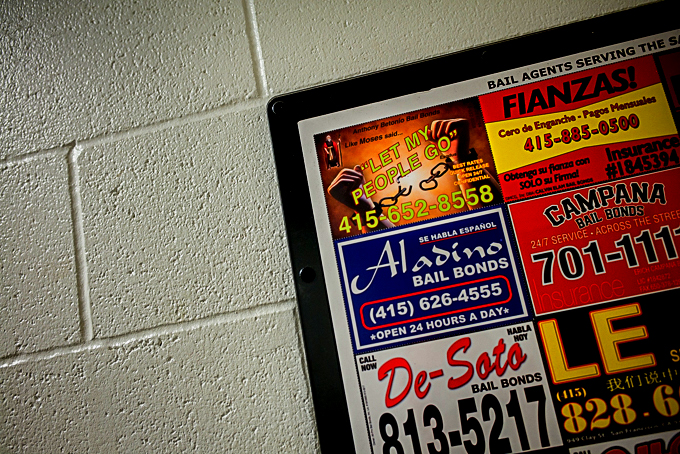
If you live in California, you will have an opportunity on November 3 to decide whether or not to replace the state’s cash bail system with a pretrial risk assessment tool that measures an individual’s likelihood of returning to court for trial and provides supervision to encourage compliance. Your yes vote on Proposition 25 means you believe, as I do, that the cash bail system is arbitrary and discriminatory because it keeps economically disadvantaged people, most of whom are people of color, in jail, charged with the same crimes for which wealthy people can buy their release.
If that is not reason enough, here is another reason for voting yes. It just might be that the end of the cash bail system will also spell the end of those obnoxious jail-n-bail fundraisers so popular among charities that really should know better.
Jail-n-bail, at least according to coolfundraisingideas.net, is “one of the best fundraisers of all time.” Here is how it works: You get a group of community luminaries – mayors, TV weather reporters, local sports heroes and people known primarily to readers of society pages – to volunteer to be “arrested” and taken to some event planner’s fantasy of what a jail looks like. They sit in the mock jail cell and dial up all their friends to solicit contributions until they raise enough money to “make bail.”
You think I’m kidding?
Jail-n-bail is a favorite of such mainstream charities as the American Cancer Society and the Leukemia and Lymphoma Society. They are also popular with smaller non-profits like the Down Syndrome Foundation of Southeastern New Mexico and the Cuyahoga County Animal Shelter in Valley View, Ohio, which urges you to “nominate yourself (or a friend) to come on down, be arrested, charged and sent to ‘jail’ with a four legged partner in crime while to scurry to ask friends and family to help you post bail!”
Websites abound with tips and tricks for successful jail-n-bails. Your event can be as simple as having your local celebrities – usually called jailbirds — gather in a public space to be “detained” in a cardboard cut-out jail cell for such offenses as refusing to smile for their driver’s license photo or showing off pictures of their grandchildren too often. Or, if you want to really put some time into it, you can issue fake wanted posters and fake arrest warrants. You can call your local police department’s community services department and order up real law enforcement officers to go to the workplaces of your volunteer arrestees, handcuff them and take them away to jail. Oh, and it would be great to get a local judge to show up in a black robe, and don’t forget the gavel! This will be such a laugh riot that the judge will have to bang the gavel often to restore order. Hilarious!

I first heard of jail-n-bail when a prominent San Francisco charity called, hoping to interest my boss, Sheriff Michael Hennessey, in being a celebrity jailbird. Imagine that! The sheriff in jail! It will be so much fun! Can we borrow some orange jumpsuits?
The problem is, there is nothing funny about being in jail. Jail is where people who do not have wealthy friends to call for bail wait months and sometimes years for trial. Like many urban jail systems in the United States, San Francisco’s is the largest provider of mental health services in the city. A significant percentage of arrestees are dual-diagnosed, suffering addiction along with mental illness. The majority lack stable housing prior to arrest. Most cannot read above the fourth-grade level, coming as they do from housing projects in crime-ridden neighborhoods where they were raised by single parents or grandparents. There is great racial disparity in San Francisco, painfully evident in the jails. In a city where the Black population hovers around five percent, the Black population in the jail system only occasionally dips below fifty percent.
I stated all those facts to the caller and said, “Sheriff Hennessey does not think it is appropriate to make fun of people in those circumstances.”
That should have been the end of it, wouldn’t you think? But the next year and the year after and for years after that, the same charity called with the same request and the same refrain about how much fun it would be.
Did these people truly not understand that fake arresting someone for something as frivolous as having a bad hair day mocked real people, arrested for real crimes, and booked into custody? Did they have no compassion for the families thrown into turmoil and fear by the arrest of a son or daughter, a parent, a husband, a breadwinner?
No, they didn’t, because it never happened to them. Their understanding of being in custody seemed to be largely based on the image of the cheerful fellow depicted on a Monopoly get-out-of-jail-free card. On the rare occasion that the son of a middle-class or wealthy family did get arrested, the family attorney would often make it to the jail, bail slip in hand, before the arrestee even arrived to be booked. In the almost unheard of event that this individual could not make bail until arraignment, I could count on a call from his parents asking to visit outside of normal visiting hours so they would not have to stand in line in a drafty concrete stairwell at the Hall of Justice with everyone else waiting to visit a family member. “We’re not like them,” they would say.
Actually, they were exactly like them, at least in one regard. They were living through the devastating experience of having a loved one in custody. But that isn’t what they meant.
If you scroll through online images of people enjoying themselves at jail-n-bails you will notice several similarities among them. For one thing, these folks like costumes. They love dressing up in orange jail outfits or in black-and-white stripes, complete with matching caps, for their trip to fake jail. They all smile while assuming the position to be handcuffed, often with real handcuffs by a real law enforcement officer. They all smile for their fake mug shots.
And, they are all white people.
Well, all but three. In the more than one hundred images I looked at, only three included Black people. Two were shown in handcuffs and one appeared in a wanted poster.
Coolfundraisingideas.net gushes that jail-n-bails “work especially well as a sorority or fraternity fundraiser…” Tell that to Northwestern University’s Kappa Kappa Gamma sorority and Zeta Beta Tau fraternity whose 2014 jail-n-bail did not work so especially well. It was intended to raise money for a children’s literacy non-profit, certainly a worthy cause. But it begs the question, why not have a used book sale, or an author event, or a volunteer sign-up to teach kids to read? Something, anything that has to do with children’s literacy.
Because then you could not advertise it with a photograph of a blonde jailbird posed provocatively in a cute little orange dress fetchingly accessorized with a ball and chain cuffed to her bare leg, that’s why.
As reported by Campus Reform, and picked up by Fox News, many students took to social media to say they found the jail-n-bail offensive. One called out the use of orange jumpsuits as a symbol of a system that adversely impacts “the lives and literacy rates of black and brown children.”
Ajay Nadig, then a sophomore, nailed it in a letter to the editor of The Daily Northwestern. “(T)he fact that a group of wealthy Northwestern students are ‘play-acting’ at being prisoners (most of whom are poor) is a blatant belittling of the realities of mass incarceration and the prison-industrial complex.”
I wish I had said that.
To their credit, Zeta Beta Tau withdrew their support, “(f)ollowing the oversight of the racial and socioeconomic issues,” associated with it, and called their participation an “error in judgment.” The event was cancelled.
Unfortunately, that was not the end of student-sponsored jail-n-bails. Five years later, Fairfield University is still hosting an annual jail-n-bail to benefit the Special Olympics, and University of Connecticut held one this year for Habitat for Humanity.
Let’s turn this around for a moment. What would happen if a bunch of well-intentioned do-gooders proposed raising money for educational materials for jail inmates – not that anyone would – by requiring prominent people to play-act being special needs children. Or, to sit in a tent on a cold sidewalk and beg for quarters until they could score a shelter bed. What if they had to put on hospital gowns and get hooked up to fake chemotherapy until they raised enough money for a doctor to declare them cancer free?
You know what would happen. The outcry would be deafening. There would be national news stories denouncing the callousness and insensitivity of the organizers. Hosts at CNN and MSNBC and Fox would unite as one, sputtering to produce the right words to express their outrage at the cruelty of ridiculing disadvantaged people in such devastating circumstances. The boards of the Special Olympics and Habitat for Humanity and the American Cancer Society would write furious op-eds calling for a boycott.
So, why is it okay when these same people raise money for their causes by ridiculing the disadvantaged Black and Brown people who populate this country’s jails?
…
RESPONSE TO BILL GALLEGOS
By David Bacon
Bill Gallegos has written a moving call for a reassessment of the way the U.S. left has treated AMLO, and a valid criticism of the U.S. left for failing to understand the political and economic context in which the Mexican government functions. The possibility of a popular government in Mexico pursuing an anti-imperialist direction promises Mexicans a watershed change from years of neoliberalism, and has an important impact on U.S. politics. As Gallegos charges, the U.S. left has not faced the reality of the unequal relationship between the U.S. and Mexico, and the way it is used by our own government. The following thoughts are offered in response.
.
MORENA is not a monolithic party. It is an electoral alliance organized to win the last election, and a party in formation. It has roots in many places, particularly in the split in the PRD, which inherited the legacy of many parties on the Mexican left, all the way back to the CPM. When the PRD shifted to the right, and began supporting initiatives like privatizing oil and other national resources, or the PRI’s corporate education reform, AMLO left with others, and together they sought to create this new electoral vehicle.
MORENA has many different constituencies, especially because big sections of the PRI abandoned the old party and joined MORENA before the election in order to hold onto some degree of power. In that context, AMLO has put forward the political program he outlined in his two speeches when he was inaugurated. That is the program he campaigned on, and that won the election.
It is a program of radical reform, to end the neoliberal direction pursued by Mexico’s governments over the last four decades, and to create an economy to serve the people’s interests. Its goals resonated with Mexicans on both sides of the border, especially when AMLO announced that “We will put aside the neoliberal hypocrisy. Those born poor will not be condemned to die poor … We want migration to be optional, not mandatory, [to make Mexicans] happy where they were born, where their family members, their customs and their cultures are.”
Today many people on the left in Mexico point to the enormous change in direction that AMLO promises. They warn that the right is trying desperately to prevent the implementation of that program and stop this change in direction. Clearly Mexico’s corporate elite has enormous power, and that danger is very real. But in this context people on the left in Mexico also look at the actions of the Mexican government and compare them to that program. That reflects their high expectations – as Mexicans who want change and are mostly realistic, not expecting everything to be accomplished in two years. It is important for the left outside of Mexico to listen to their diverse voices, to understand where they see progress and where they don’t. It’s especially important because the biggest obstacle to progress comes from “the colossus to the north.”
The U.S. government and corporations have a long history of pressuring the Mexican government and threatening its sovereignty. This pressure, based on the U.S. economic penetration of Mexico, has existed for almost two centuries. The left in the U.S. has not responded to this consistently. In the period when AMLO has been president U.S. pressure has led to serious consequences. One was the acceptance of the refugee camps on the border, when Trump threatened to close the border to commercial traffic. The integration and subordination of the Mexican economy to the U.S. creates a vulnerability Trump understands, and he used it as a powerful source of leverage.
Then that pressure was applied again. In March U.S. State Department officials, the ambassador, and powerful U.S. defense and auto companies forced AMLO to agree to resuming production in the maquiladoras that supply the Pentagon and auto assembly lines. Production had been stopped by AMLO’s own order, by popular pressure, and especially by strikes by workers themselves, reacting to a wave of COVID-19 deaths in the plants. Relaxing the order and allowing production to resume put the lives of workers at risk, and some have died as a result.
The left in the U.S. has a responsibility to help people here understand the terrible consequences of the huge power the U.S. exerts over the Mexican economy, and to fight for solidarity with Mexican workers and farmers. During the 1990s many U.S. unions and activists took that responsibility seriously, and developed a cross-border movement with their sisters and brothers in Mexico. That movement has largely dissipated, however.
Instead, over the past year most of U.S. labor, the trade coalitions and part of the left criticized Mexico endlessly for labor violations, and for failing to quickly implement reforms to its labor law. The rhetoric was mostly a justification for supporting the sham “labor protections” in the new trade treaty. The U.S., with a much worse labor record, was not held to the same standard. The only reform underway to U.S. labor law is the right-wing’s continued evisceration of it. Yet the left never pointed out the treaty’s complete lack of any “protections” for U.S. workers’ rights, or called for any.
At the same time, labor and the left did very little (the USW excepted) to help workers in Mexico under attack. The most recent example was the lack of any outcry in the U.S. when Grupo Mexico forced the USW to end its strike and return to work in Arizona copper mines, while prolonging the strike of Mexican miners in Cananea – a strike which has gone on for 13 years. While the company belongs to a wealthy Mexican family, it has deep ties to U.S. corporations. There was hardly any coverage in the U.S. left press of the strikes or support efforts for strikers on both sides of the border. It’s also fair, however, to ask why MORENA hasn’t acted against this corporation’s anti-worker offensive, especially since Napoleon Gomez Urrutia, head of the Mexican miners’ union, is now a MORENA Senator from Sonora.
This is the complex context in which AMLO went to Washington DC for a state visit with Trump. A big part of the outcry about it came from organizations of Mexicans here in the U.S., from FIOB to AMEXCAN in North Carolina. These are the communities that deal most directly with the impact of Trump’s anti-Mexican rhetoric. They’re also the organizations in the U.S. that gave AMLO the most support, because of his promise of change. Their anger and resentment when AMLO then traveled to DC to meet Trump is not surprising.
…
The US Left Needs Humility to Understand the Politics of México
By Bill Gallegos
The recent visit to the US by Mexican President Andres Manuel Lopez Obrador (AMLO) for a meeting with President Trump has stirred a great deal of media reaction in the US and México. Nearly all US media articles about the visit characterize it as AMLO abandoning his progressive principles and shamefully kowtowing to Donald Trump, despite the latter’s obvious racism towards Mexicans, his brutal deportation and anti-immigration policies. Without exception, none of these articles considers the political and economic context in which AMLO and his Morena party are attempting to implement significant economic, social, and political reforms in México. In order to better appreciate what AMLO and Morena are attempting to do and the significant challenges they face, here are some important factors the Left, especially the North American Left, needs to consider.
1. The strategic impact for the peoples of México, Latinoamérica, the Chican@-Mexican@ people in the US, and the general struggle against US imperialism, if México were to “go left” in a sustained way. A Leftist or Left-leaning México would be much, much more impactful than even when Venezuela, Ecuador, Bolivia, etc, went pink. This is due not only to its size, its economy, its resources, but because it shares a 2000-mile border with the US and has a “friendly” support population of more than 35 million Chican@-Mexican@ people within US borders.
2. Morena is a very young party, barely over 5-years old. The PRI on the other hand held power for most of the past seventy years. And the rightist PAN, which won its first national election in 2000, has been around since 1939. Compared to Morena’s brief history, these two parties are deeply entrenched within Mexican society, especially with its ruling elite. It was in just 2014 that Morena’s membership decided overwhelmingly to become an official political party, thus enabling it to run candidates at all levels. Morena’s 2018 electoral victories were both comprehensive and unambiguous. They won hundreds of offices at the local, regional, national legislative, and presidential level. This reflected years of organizing, and gargantuan mass support from nearly all sectors of Mexican society, but particularly from its working classes. Morena now has to govern while in the process of consolidation — programmatically, organizationally, politically and ideologically, financially, etc. It is like a vehicle that must be driven while still being assembled. Under ordinary circumstances this would be an extremely challenging task, but it becomes even more complicated and difficult because of the COVID crisis.
3. The Mexican oligarchy remains deeply entrenched and in control of the Mexican economy, most of its mass media, major institutions (including many unions), etc. And neither the PRI nor the Pan have gone away. They, together with the oligarchy and media which they largely control, have been working since the elections to undermine and overthrow AMLO and Morena. The Mexican public is daily bombarded with mass media propaganda about the failings of AMLO and Morena.
4. AMLO and Morena have an incredibly democratic/social democratic reform program, and they have identified their two most important issues, based on consultation with the masses, as ending corruption, and ending the massive wealth and income inequality in México. This does not mean that other issues — like NAFTA 2, environment, etc., are unimportant, but unless AMLO and Morena can show progress on the priority issues, they would likely lose significant mass support.
5. AMLO and Morena have achieved policies addressing their two priority issues — increased funding for health, social, and educational programs, support for the development of independent unions, increasing the minimum wage, and more. The money comes not from taxes on the people, but from tackling corruption. We don’t hear much about this in the US, but they are having a very positive impact on improving the lives of millions of Mexicans.
6. AMLO and Morena face the most powerful superpower in the world on its 2000-mile northern border, one with massive levels of economic penetration in México, myriad ties to the PRI and PAN, links to the Mexican military through the bogus war on drugs, and shared neoliberal goals with the Mexican capitalist class. Layered onto these realities is the new and critical factor that the US is now led by a neo-fascist, openly racist and xenophobic president and New Confederacy political class that controls the US Senate, the Supreme Court, and a majority of governorships and state legislatures. The devastating impact of US economic policies on the Iranian economy demonstrates the potential damage the Trump Administration could inflict on the Mexican economy. And, the example of the coup in Bolivia shows the extent to which the US will go to undermine governments it considers a threat to its imperial interests. Bolivia was a clear warning shot fired across the bow of México.
7. AMLO and Morena now must also face the challenge of COVID, with all of its health and economic impacts. AMLO and Morena must deliver on their campaign promises with greatly diminished economic resources than before COVID; and the people need more financial help than before COVID.
8. Given these conditions, it should be no surprise that AMLO and Morena have chosen to avoid a sharp and prolonged conflict with the Trump Administration. When Trump threatened serious economic consequences for México if it did not agree to several negative compromises on immigration, asylum, and migrant caravans, these were not idle threats, but ones that could have done serious damage to the Mexican economy, resulting in possibly destroying the continuing mass support for AMLO and Morena. And it is important to keep in mind that México continues to pursue a progressive foreign policy with all nations including Cuba, Venezuela, Bolivia, Iran, and Palestine.
9. Like any government, especially one in its infancy, AMLO and Morena have surely made mistakes and political errors, including possibly serious ones in their response to COVID, domestic violence and femicide. And within México there has been serious and legitimate controversy around matters such as El Tren Maya, Indigenous rights, and labor rights.
10. While the Left need not turn a blind eye to these matters, we should continue to keep our eyes on the prize — which is a consolidated Morena party that can learn how to effectively govern and which can become a beacon of hope for the Mexican people, for Latinoamérica, for Chican@-Mexicans@ and other oppressed and working class peoples in the US, and for everyone working for the destruction of US imperialism. Marxism’s greatest lesson is to base our plans, policies, and strategies on a historical and materialist analysis of concrete conditions. Taking this approach, with regard to AMLO and México, the Left should be more than hesitant to trash AMLO because he met with Trump, affirmed a NAFTA treaty that was negotiated by Enrique Peña Nieto, and seemed to shower Trump with undeserved praise. This meeting and these actions may be small prices to pay if it keeps the Trump Administration hesitant to “go Bolivia” with Morena and AMLO. Building any type of sustainable Left and progressive movement is most often about creating breathing room, about political space, about maneuverability. And it’s about us all having some goddam humility.
…
Perceptions of Prisoners
By Eileen Hirst
This is the first of two pieces by Eileen Hirst. The second will will be posted next Tuesday.
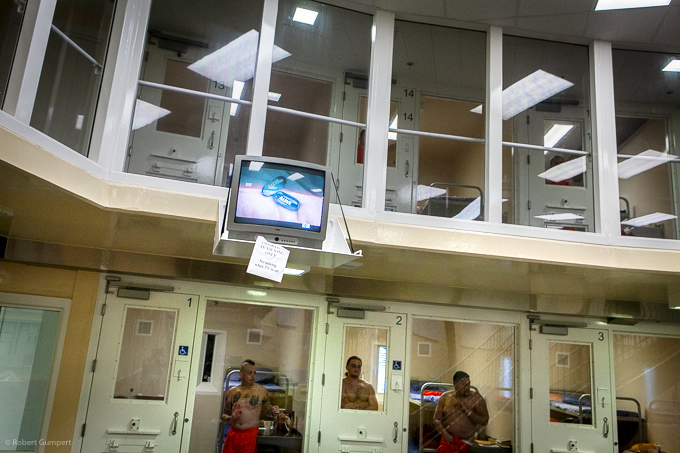
What is it about the incarcerated that so captures the imagination and causes reasonably intelligent people to abandon common sense and good manners? It is a question I had plenty of opportunity to wrestle with in twenty years of serving as Chief of Staff to San Francisco Sheriff Michael Hennessey.
Mine was the phone that rang when people with no reason other than curiosity sought to visit the county jails. It was as if they viewed the jail system as a sort of lending library, where they could borrow prisoners for their own purposes, for free, and then walk away.
Requests came from all sorts of people:
–“I live in the neighborhood and would just like to see who is in there.” Would this woman ever knock on a stranger’s door and expect to be welcomed in just to eyeball the residents? Of course not, but it seemed okay when it was jail inmates she was barging in on.
–“I’m writing my first novel. My protagonist gets a job as a prison guard. I need to see what kind of people she would have to deal with.” Isn’t the first advice to new writers something about writing what you know?
–“I’m in eighth grade and my teacher assigned us to visit a jail and talk to some real criminals.” I thought someone was playing a joke on me until five more eighth-graders called. “Have your teacher call me,” I said. She never did, even after I left a message for her myself, which robbed me of the chance to ask her what on earth she hoped to achieve with this assignment.
The answer to all these callers was no. Jails are busy, congested places. Prisoners are not just languishing in their cells waiting for the curious to show up and look at them. They are going to court, having medical treatment, and attending high school classes and AA meetings. They are conferring with their attorneys and calling their families. They are working in the kitchen and staffing the laundry.
“How would you like to live your life with the front wall of your house sawed open, like you are an exhibit in a zoo?”
Jail staff – deputy sheriffs, nurses, teachers – are in constant motion, too. Imagine what it takes to get three meals a day to 1300 people, keep track of their clothing, bedding and towels, distribute their medications, escort them to classrooms and exercise areas, facilitate their family visits, and still deliver them to the right courtroom at the right time. Now, imagine doing all that when the toilets in facilities half a century old facility have just overflowed, again. Open the doors to gawking civilians? Sorry, no.
Logistics aside, it was the gawking that made us queasy. No matter the circumstances that bring people to jail, jail is where they live their daily lives until disposition of their criminal cases, and sometimes after. They wake up, shower, get dressed, eat, and use the toilet, all within full view of jail staff, other prisoners, and anyone who happens to be walking by their locked housing units.
How would you like to live your life with the front wall of your house sawed open, like you are an exhibit in a zoo? A law professor didn’t understand how intrusive it would be to have her first-year students do a walkthrough, just to see, she said, what jail is really like, until I suggested we have a van full of prisoners do a walkthrough of her home, just to see what middle-class life is really like.
More baffling were parents hoping to frighten their misbehaving offspring into taking out the garbage and staying away from their hoodlum friends. “I have tried everything. Nothing works. I am at the end of my rope. Maybe if my son sees what jail is like, and the people in there, he will get the message.”
How can you not feel badly for a mother so parenting-challenged she is ready to hand the job over to “the people in there,” which I took to mean big, scary, tattooed gang-banging skinheads who live in her imagination. That’s a heck of a message. No kid would miss it.
It never seemed reasonable to me that a defiant teenager would be transformed into an obedient and respectful model of good behavior by staring at a jail full of people whose problems go quite a bit deeper than mouthing off to their parents. I suggested instead a tour of the University of California at Berkeley. Forget jail; show your son college.
“The last question I asked was, to us, the most important: What’s in it for the prisoners?”
For sheer arrogance and cluelessness, college professors were hard to beat. They would design elaborate surveys requiring lengthy serial interviews with a hundred or so prisoners from which they could write up findings designed to keep them alive in a publish-or-perish quest for tenure. And then they would call me to set it all up for them.
For highly educated people, their expectations revealed an astonishing ignorance of the most basic facts of justice-involved life. They expected me to provide detailed criminal histories, which, if I did, would make me guilty of a misdemeanor. They expected a clean, quiet, dedicated space for their interviews. They expected our staff to arrange appointments for them with their research subjects. Most illogically, they believed there was some system, some big computer in the sky, that kept track of prisoners after they left our custody as if we micro-chipped them on their way out the door, the easier to find them for follow-up interviews.
It surprised these academics that most county jail prisoners do not stay long, the majority leaving within three to thirty days. Their charges are dropped, they are granted own-recognizance (OR) release, they are sentenced and move on to state prison. And, no, they don’t send us postcards to let us know where they are and how they are doing. In fact, they would rather we not know.
Sometimes, researchers asked to camp out in the intake facility, the first stop after arrest, where people are booked into custody. Here is where arrestees are subjected to the humiliation of being searched, fingerprinted and get their mug shots taken. They swap their street clothing for an orange t-shirt and pants. They are given a baloney sandwich to eat in a holding cell, while waiting with other arrestees to be medically triaged and interviewed to detect mental health issues. They meet with a classification officer to review their criminal history and answer dozens of questions about their family, their education, their job and any prison experience or gang affiliation they might have, or any enemies they know of who are already in custody. They are often combative, drunk, or high. To a person, they are unhappy about their circumstances.
Into this controlled chaos, where upwards of 60 people could be getting booked at the same time, one professor with multiple masters degrees and a Ph.D. expected to be given a desk, where she could add her list of questions to the multi-step booking process, which is required by law to be completed in twenty-four hours, and which has to be finished before an individual, who may be detoxing, can be assigned a bed.
Nevertheless, Sheriff Michael Hennessey sought to enable academic research if it could be accomplished without too much disruption of jail routine and security, and if it would inform his effort to provide programming that would help break the cycle of poverty, violence and incarceration that keep prisoners returning to custody over and over. In search of that rare project, I asked a lot of questions about the mechanics of proposed research and how the results would be used.
The last question I asked was, to us, the most important: What’s in it for the prisoners?
A moment of puzzled silence. Well, what do you mean?
What I mean is, what about your research is of benefit to the prisoners? You are getting paid. You are getting something to add to your resume. Maybe you will score a publishing contract. You are asking people at an enormously stressful time in their lives to answer incredibly personal, often extremely painful, questions and you are recording their answers for your own little piece of academic immortality. What do the prisoners get?
The answers were always a variation on the same theme. Why, they will get the satisfaction of having given back to the community, of having made amends. This research is going to change the lives of future generations and those who participate will be able to feel good about having helped someone else in their circumstances.
Fine, but the answer we were looking for was something more practical. Maybe food on the table for their families? Tutoring to improve their literacy? A job when they get out? Perhaps some cash in their commissary accounts so they can buy phone cards and call their children? How about helping them make bail?
As it was explained to me, that would be impossible. Apparently, there is something about research subjects receiving anything beyond token compensation that can taint the outcome.
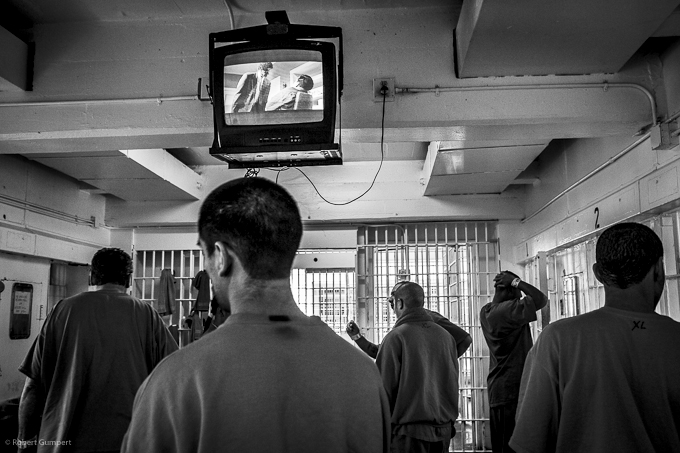
For one criminology professor, token compensation topped out at about a buck and a quarter, the price of the Snickers candy bars he proposed providing to the lucky prisoners chosen for his study.
A Snickers bar? They don’t even get to choose their own candy bar? It couldn’t have been a Mars bar or a Hershey’s if they preferred one of those? What about people with nut allergies? Snickers. Just the name alone mocks the prisoners for being suckers enough to go along on this ride. We said no to him.
We did not say no to everyone, but we were tempted after one eminent researcher brought along his own documentary film crew. Was the film about the prisoners participating in the violence prevention program he was being paid to study?
No, it was about him.
Paradoxically, during the years I fielded these inquiries, the Sheriff’s Department faced two federal class action lawsuits alleging inhumane conditions at two of San Francisco’s jails. One, the oldest operating county jail west of the Mississippi, was so dilapidated that the judge declared it in violation of the Eighth Amendment prohibition against cruel and unusual punishment. Sheriff Michael Hennessey, desperate to convince voters to fund safe, modern facilities, had me invite reporters in to show them the maggots wiggling around in the shower drains, the broken elevators, and the electrical panel only inches above the water line in a basement that flooded with every winter storm. I showed them six-by-seven-foot cells housing two people each and a broom closet converted into a medical office serving more than 600 people. I made reporters stand at the head of long, poorly lit tiers of barred cells to see for themselves how impossible it was for deputy sheriffs to properly supervise prisoners and prevent sexual assault.
I taped a sign over my desk reading, “A day without press is like a day without sunshine,” and made it my business to have very few days without sunshine. The conditions in San Francisco’s jails made local and national news, frequently. Yet, in twenty years, I received not a single request to talk to prisoners about the experience of living where sewage bubbling up from the toilets destroys legal documents and soaks your shoes. No one was curious to know the trauma caused by a horrific rape that occurred as a direct result of obsolete architecture. Or, what it is like to sleep on the floor of a twelve-person tank holding sixteen people and having them step over you on their way to the shower. Or, to be locked in a crumbling concrete building a couple of hundred yards from an active earthquake fault.
To ask those questions is to acknowledge the humanness of incarcerated people, and there is the rub.
It is so much easier, more comfortable, to view prisoners as “them,” some sort of subspecies, predisposed to violent, antisocial behavior. Not like “us.” To acknowledge the humanness of incarcerated people requires acknowledging – and acting to end — the inequities and inadequacies of a public education system running on fumes; a health care system where the quality of treatment has more to do with the patient’s employment than their medical condition; the use of police to respond to mental health crises; and, our utter failure to care for veterans returning from fighting our wars. It requires grappling with the roles of race and privilege, and poverty and wealth, in determining who is incarcerated and who is not.
And that is so much harder.
…
This is the first of two pieces by Eileen Hirst. The second will will be posted next Tuesday.
Not a Simple Story
By Peter Olney
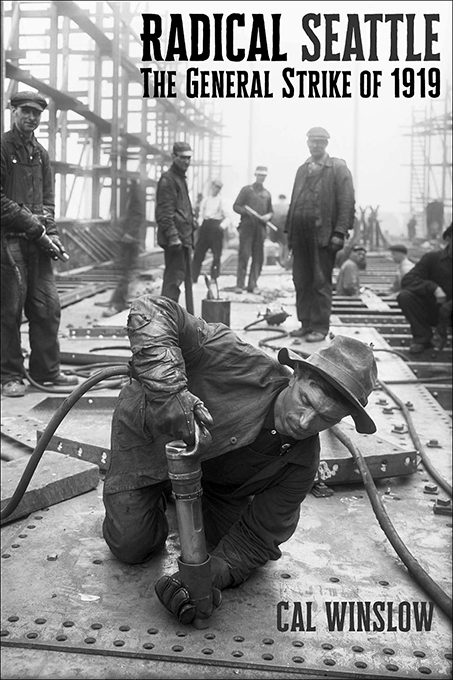
“Radical Seattle The General Strike of 1919” by Cal Winslow Monthly Review Press 2020
In December of 1997 I was hired by the International Longshore and Warehouse Union (ILWU) to become their first Director of Organizing. At its International Convention in Hawaii in June of that same year the union had decided to dedicate 30% of its revenue to organizing and build out a department. I was honored to get the assignment of directing the union’s regional organizing staff. My first task was to head up to the Puget Sound to investigate the feasibility of organizing workers in the Duwamish River, a container and barge staging area for the Alaska trade. At the time the Inland Boatmen’s Union of the Pacific (IBU), the ILWU’s marine division owned a small launch for their patrolmen to use in policing their tug, barge and ferry jurisdiction in the region. ILWU elected leaders and organizers clambered onto the launch for the short ride to West Seattle to eat at “ Salty’s on Alki“ a famous seafood restaurant for a working lunch. When we got to the dock in West Seattle, I stepped off the launch, lost my footing and fell halfway into the drink. Great start for an Organizing Director! I loudly proclaimed, “I hope I know more about organizing than I do about maritime.” That was my frigid introduction to Elliot Bay and Seattle.
Cal Winslow’s important book, “Radical Seattle” reintroduces me to the region through the lens of the history of one of labor’s great moments, the Seattle General Strike of 1919. While the actual strike was of short duration and questionable results, the events leading up to it and its subsequent impact on labor and the region are important for any serious labor practitioner to understand. Moreover, in light of the pandemic and the Black Lives Matter risings, it becomes even more important to understand the factors that give rise to mass labor actions and to general strikes of which there have been few in our nation’s history. Strike talk is often in the air when crises arise, but often those yelling the loudest for a general strike have the least understanding of the factors and organizing involved in pulling one off. Winslow’s work gives us a valuable panorama of the complicated factors that led to the Seattle action on the heels of WW I.
As my friend and astute student of labor risings, Katy Fox Hodess from Sheffield University, has taught me, worker risings and worker power get exercised in the context of social and political support: “We have to be careful when we talk about logistics workers and the potential power that’s there because of their position in the economy. There are so many other contextual factors that are shaping the possibilities for logistics workers to organize. Some of those factors — particularly the role of the state — are difficult to overcome. And it’s even more difficult in other parts of the world. It is one thing to have potential power in the workplace; it is another to have the confidence and support to exercise it.”[1]
There is a legacy of the Seattle General Strike that permeates the labor movement in Seattle to this day. The ILWU locals in the Puget Sound region have been and remain some of the most progressive in the union. The IBU has been a starter engine for the whole union in motivating support for progressive causes and for the recent candidacies of Bernie Sanders for President. Post retirement from the ILWU I have been doing training and teaching at the Building Trades Academy of the North American Building Trades Unions (NABTU). Consistently our student organizers from the Seattle area are often the most forward thinking in their practices and the most embracing of change in their ranks. The Cement Masons have the largest cohort of women members of any cement local in the country. The King County (Seattle) Labor Council recently expelled the Seattle Police union from their ranks after the murder of George Floyd in Minneapolis. There is something in the air in Seattle and its environs. Winslow’s book peels back the history of why the region is the way it is. Winslow is eminently qualified to tell this story as a native son of south Seattle and the Holly Park housing projects. His parents were both active in the worker’s movement, so he grew up around the Labor Temple and learned early on that a picket line meant, “Do not Cross!”.
Just as San Francisco grew dramatically because of the Gold Rush and the Pacific trade, Seattle and the Puget Sound region grew because it is two days closer to Russia and Asia by sea than San Francisco, and it is the portal to the Alaska gold rush and the shipment of extractive industries like mining and lumber. These are the objective conditions that give rise to vital maritime industries of shipbuilding and cargo transport. And on that terrain there are many battles leading up to the 1919 general strike. In his first chapter, The Union’s Inspiration, Winslow challenges himself to deliver an understanding beyond these objective conditions and work relations: “The challenge is to expand our field of vision in time, stretching it both backwards and into the future, and geographically not contract it. We have to consider the roots of the strike, to follow the development of a movement, to see this historical moment in context”.[2]
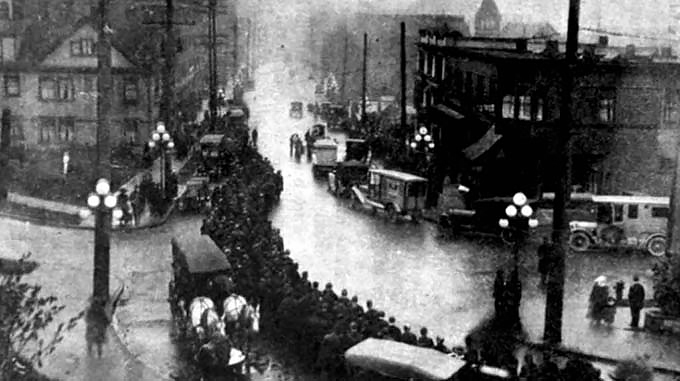
The general strike was the culmination of a series of actions. The Everett Massacre of late 1916 shaped the consciousness of many and was a touchstone moment for the roll up to 1919. Cops and thugs murdered Industrial Workers of the World timber workers and supporters. In a subsequent trial in 1917 the framed up IWW members were exonerated and that victory resonated nationwide and brought energy and confidence to the Seattle conflict. The IWW was active in logging and lumber and other extractive industries and was a huge influence on the consciousness of western workers in particular.
But a broad array of political forces influenced the workers of Seattle and were the agitators for the general strike important among them the Socialist Party with Eugene Debs as its Presidential candidate had garnered 1 million votes in 1912.
What is perhaps most interesting about Winslow’s historical journey is that he captures the radicalism of craft unions that were the leading forces in this strike. This is of course prior to the massive industrial organizing drives of the CIO in the 30’s so most of American trade unionism was craft based aside from the needle trades and the mineworkers. But it also contradicts any analysis that condemns all craft unionism to be conservative and inherently backward. Here again conditions and conscious leadership play a major role in shaping action. In fact, 110 different AFL craft unions ended up supporting the five-day general strike, which was sparked by the strike of craft unions at shipyards in Elliot Bay. Further for those in today’s labor left who disdain the often-crusty and exclusive “Political Action Committee” role of central labor bodies, it is important to reflect on the fact that this general strike in February of 1919 was led by the Central Labor Council.
60,000 workers of all crafts went out for five days in support of a Metal Trades Council strike of 35,000 at the Seattle shipyards. And while the 60,000 went back to work on February 11, the shipyard workers remained out until March. It is not clear what was won and lost in this battle but the experience of the five-day paralysis of the wheels of commerce influences consciousness in the Seattle working class to this day.
After quoting his mentor, the great British Marxist historian EP Thompson, “Consciousness of class arises in the same way in different times and places, but never just the same way”[3], Winslow goes on to characterize the Seattle experience, “In Seattle, class consciousness arose in the utopian colonies, in logging camps and mills, in free speech fights, in Everett and on the waterfront. In war and in dissent, in strikes of the telephone girls, waitresses, hotel maids, “lady barbers”, and laundry workers, in co-ops and working-class neighborhoods”. This is a book that paints an overall picture of a complicated terrain within which political actors maneuver, building alliances, sometimes temporal, that result in big change and a lasting heritage. Big battles happen because of multiple factors and underlying history and conditions. “Radical Seattle” is a wonderful antidote to overly simple and linear strategies for labor. It is a blow to those who conceptualize labor history as the simple rising of rank and file radicals challenging the crusty bureaucracy of their labor organizations. The Seattle general strike and any subsequent battles of any significance are always a more complicated mix. Thank you to Cal Winslow for this dynamic portrait. Pick it up online from Monthly Review Press and give it a read.
[1] https://www.jacobinmag.com/2018/10/choke-points-logistics-industry-organizing-unions
[2] “Radical Seattle: The General Strike of 1919” Page 41
[3] The Making of the English Working Class, EP Thompson Vintage Books February 1966
…
Fed Up, Step Up
By Robert Gumpert
Many thanks to those who have donated:
Christina Perez and Peter Olney
Buck Bagot
Jeff Kilbreth
…
Peter and I as co-editors of The Stansbury Forum would like to make the following offer towards moving towards a more progressive and responsive country. To do that we need new leadership, not only in the White House but throughout local, state and national offices.
To that end the Stansbury Forum is offering “note card” box sets of 25 black and white worker portraits from the archive of Robert Gumpert, with envelopes. The sets go to the first 4 readers who let us know (ragumpert@gmail.com) they will donate $250 total to one or more of the following:
One of Swing Left’s strategic funds
Or any other of the Swing Left donation methods.
We will let you know if you are one of the first 4. Once you hear from us, donate and we will send you your box set (the sets will be done by the 2 August) once you send us verification.
Below you can see the 25 images included.
Robert Gumpert, Peter Olney
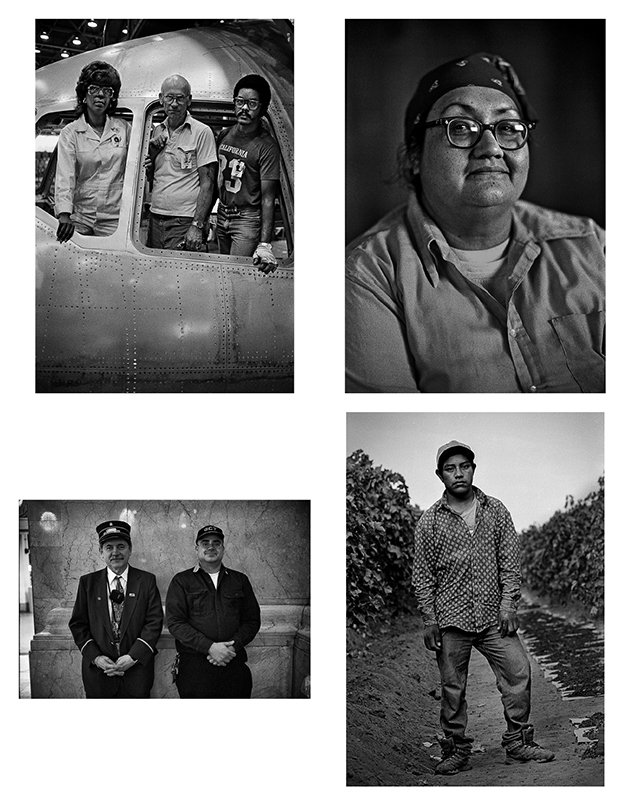
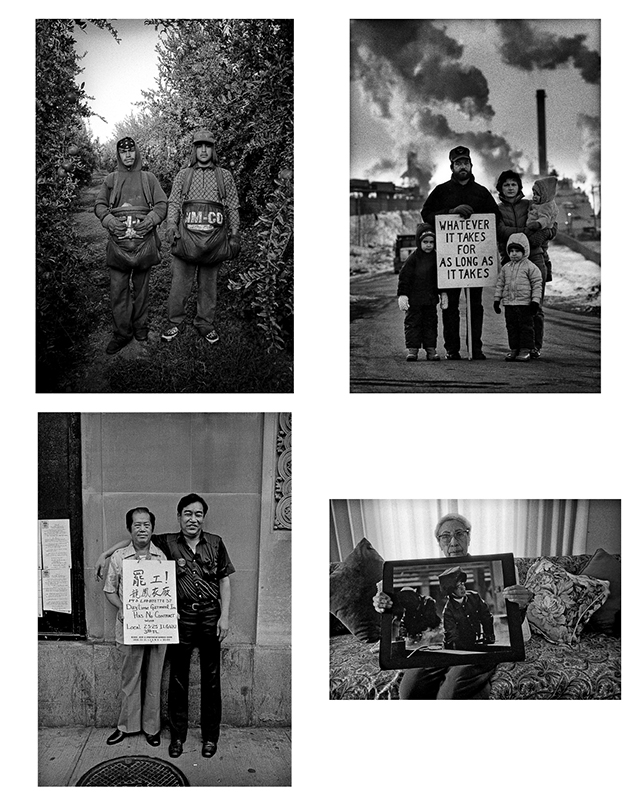
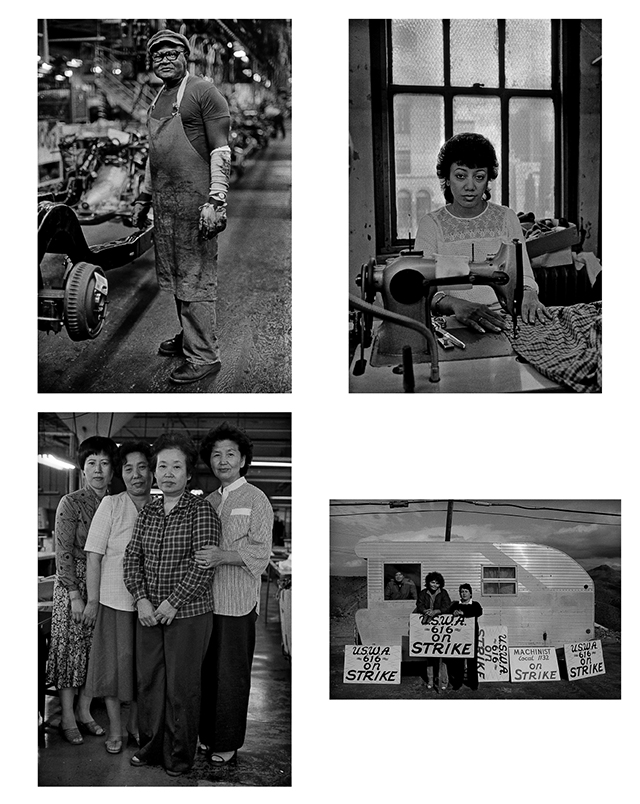
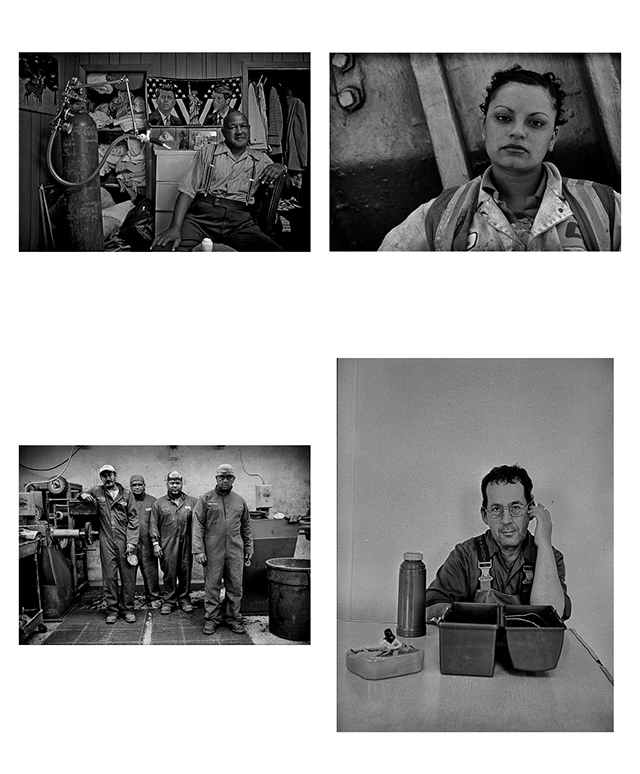
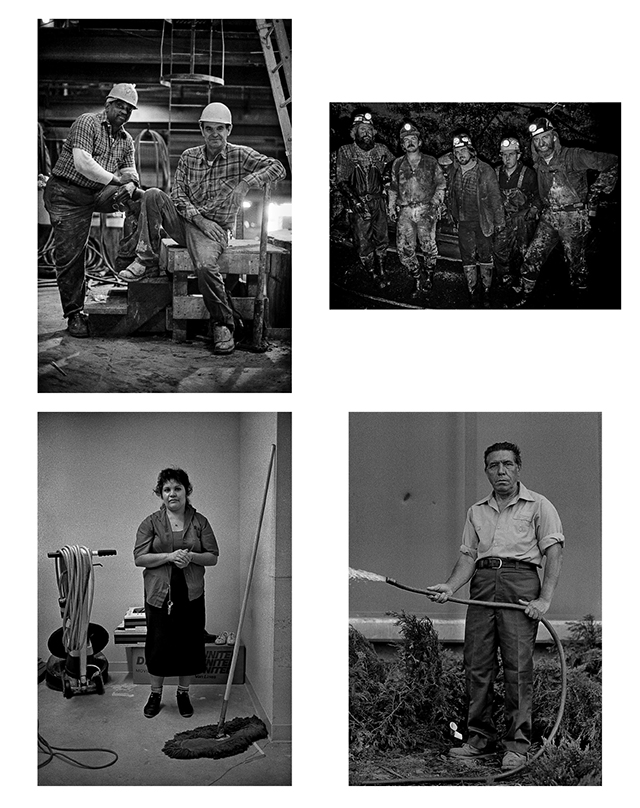
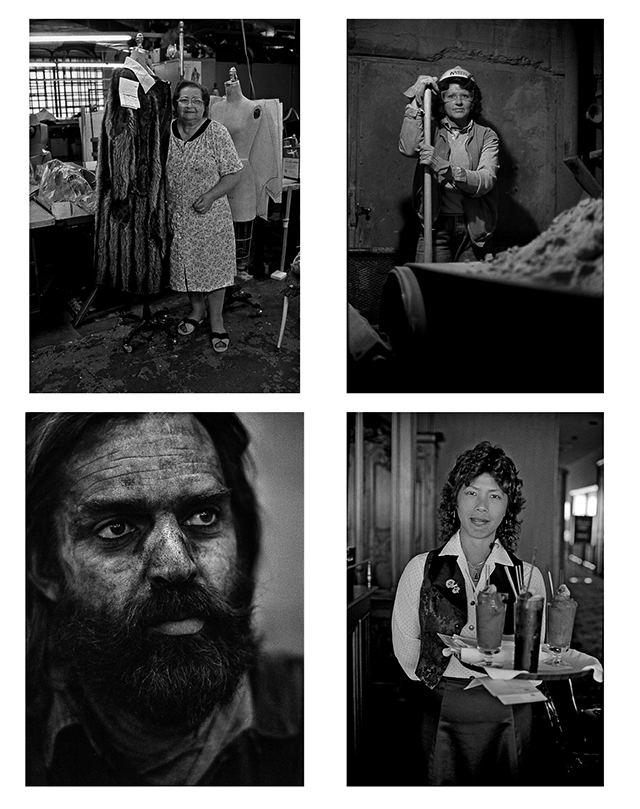
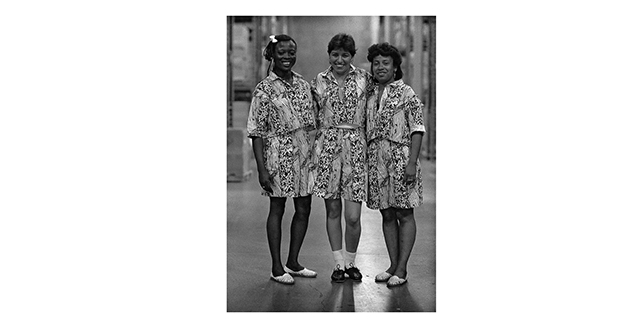
…
Patriotic Dissent: How a Working-Class Soldier Turned Against “Forever Wars”
By Steve Early and Suzanne Gordon

When it comes to debate about US military policy, the 2020 presidential election campaign is so far looking very similar to that of 2016. Joe Biden has pledged to ensure that “we have the strongest military in the world,” promising to “make the investments necessary to equip our troops for the challenges of the next century, not the last one.”
In the White House, President Trump is repeating the kind of anti-interventionist head feints that won him votes four years ago against a hawkish Hillary Clinton. In his recent graduation address at West Point, Trump re-cycled applause lines from 2016 about “ending an era of endless wars” as well as America’s role as “policeman of the world.”
In reality, since Trump took office, there’s been no reduction in the US military presence abroad, which last year required a Pentagon budget of nearly $740 billion. As military historian and retired career officer Andrew Bacevich notes, “endless wars persist (and in some cases have even intensified); the nation’s various alliances and its empire of overseas bases remain intact; US troops are still present in something like 140 countries; Pentagon and national security state spending continues to increase astronomically.”
When the National Defense Authorization Act for the next fiscal year came before Congress this summer, Senator Bernie Sanders proposed a modest 10 percent reduction in military spending so $70 billion could be re-directed to domestic programs. Representative Barbara Lee introduced a House resolution calling for $350 billion worth of DOD cuts. Neither proposal has gained much traction, even among Democrats on Capitol Hill. Instead, the House Armed Services Committee just voted 56 to 0 to spend $740. 5 billion on the Pentagon in the coming year, prefiguring the outcome of upcoming votes by the full House and Senate.
An Appeal to Conscience
Even if Biden beats Trump in November, efforts to curb US military spending will face continuing bi-partisan resistance. In the never-ending work of building a stronger anti-war movement, Pentagon critics, with military credentials, are invaluable allies. Daniel Sjursen, a 37-year old veteran of combat in Iraq and Afghanistan is one such a critic. Inspired in part by the much-published Bacevich, Sjursen has just written a new book called Patriotic Dissent: America in the Age of Endless War (Heyday Books)
Patriotic Dissent is a short volume, just 141 pages, but it packs the same kind of punch as Howard Zinn’s classic 1967 polemic, Vietnam: The Logic of Withdrawal. Like Zinn, who became a popular historian after his service in World War II, Sjursen skillfully debunks the conventional wisdom of the foreign policy establishment, and the military’s own current generation of “yes men for another war power hungry president.” His appeal to the conscience of fellow soldiers, veterans, and civilians is rooted in the unusual arc of an eighteen-year military career. His powerful voice, political insights, and painful personal reflections offer a timely reminder of how costly, wasteful, and disastrous our post 9/11 wars have been.
Sjursen has the distinction of being a graduate of West Point, an institution that produces few political dissenters. He grew up in a fire-fighter family on working class Staten Island. Even before enrolling at the Academy at age 17, he was no stranger to what he calls “deep-seated toxically masculine patriotism.” As a newly commissioned officer in 2005, he was still a “burgeoning neo-conservative and George W. Bush admirer” and definitely not, he reports, any kind of “defeatist liberal, pacifist, or dissenter.”
Sjursen’s initial experience in combat—vividly described in his first book, Ghost Riders of Baghdad: Soldiers, Civilians, and the Myth of The Surge (University Press of New England)—“occurred at the statistical height of sectarian strife” in Iraq. “The horror, the futility, the farce of that war was the turning point in my life,” Sjursen writes in Patriotic Dissent. When he returned, at age 24, from his “brutal, ghastly deployment” as a platoon leader, he “knew that the war was built on lies, ill-advised, illegal, and immoral.” This “unexpected, undesired realization generated profound doubts about the course and nature of the entire American enterprise in the Greater Middle East—what was then unapologetically labeled the Global War on Terrorism (GWOT).”
A Professional Soldier
By the time Sjursen landed in Kandahar Province, Afghanistan, in early 2011, he had been promoted to captain but “no longer believed in anything we were doing.” He was, he confesses, “simply a professional soldier—a mercenary, really—on a mandatory mission I couldn’t avoid. Three more of my soldiers died, thirty-plus were wounded, including a triple amputee, and another over-dosed on pain meds after our return.”
Despite his disillusionment, Sjursen had long dreamed of returning to West Point to teach history. He applied for and won that highly competitive assignment, which meant the Army had to send him to grad school first. He ended up getting credentialed, while living out of uniform, in the “People’s Republic of Lawrence, Kansas, a progressive oasis in an intolerant, militarist sea of Republican red.” During his studies at the state university, Sjursen found an intellectual framework for his “own doubts about and opposition to US foreign policy.” He completed his first book, Ghost Riders, which combines personal memoir with counter-insurgency critique. Amazingly enough, it was published in 2015, while he was still on active duty, but with “almost no blowback” from superior officers.
Before retiring as a major four years later, Sjursen pushed the envelope further, by writing more than 100 critical articles for TomDispatch and other civilian publications. He was no longer at West Point so that body of work triggered “a grueling, stressful, and scary four-month investigation” by the brass at Fort Leavenworth, during which the author was subjected to “a non-publication order.” At risk were his career, military pension, and benefits. He ended up receiving only a verbal admonishment for violating a Pentagon rule against publishing words “contemptuous of the President of the United States.” His “PTSD and co-occurring diagnoses” helped him qualify for a medical retirement last year.
Sjursen has now traded his “identity as a soldier—the only identity I’ve known in my adult life—for that of an anti-war, anti-imperialist, social justice crusader,” albeit one who did not attend his first protest rally until he was thirty-two years old. With several left-leaning comrades, he started Fortress on A Hill, a lively podcast about military affairs and veterans’ issues. He’s a frequent, funny, and always well-informed guest on progressive radio and cable-TV shows, as well as a contributing editor at Antiwar.com, and a contributor to a host of mainstream liberal publications. This year, the Lannan Foundation made him a cultural freedom fellow.
In Patriotic Dissent, Sjursen not only recounts his own personal trajectory from military service to peace activism. He shows how that intellectual journey has been informed by reading and thinking about US history, the relationship between civil society and military culture, the meaning of patriotism, and the price of dissent. One historical figure he admires is Marine Corps Major General Smedley Butler, the recipient of two Medals of Honor for service between 1898 and 1931. Following his retirement, Butler sided with the poor and working-class veterans who marched on Washington to demand World War I bonus payments. And he wrote a best-selling Depression-era memoir, which famously declared that “war is just a racket” and lamented his own past role as “a high-class muscle-man for Big Business, for Wall Street, and for the Bankers.”
Reframing Dissent
Sjursen contrasts Butler’s anti-interventionist whistle-blowing, nearly a century ago, with the silence of high-ranking veterans today after “nineteen years of ill-advised, remarkably unsuccessful American wars.” Among friends and former West Point classmates, he knows many still serving who “obediently resign themselves to continued combat deployments” because they long ago “stopped asking questions about their own role in perpetuating and enabling a counter-productive, inertia-driven warfare state.”
Sjursen looks instead to small left-leaning groups like Veterans for Peace and About Face: Veterans Against the War (formerly Iraq Veterans Against the War), and Bring Our Troops Home.US, a network of veterans influenced by the libertarian right. Each in, its own way, seeks to “reframe dissent, against empire and endless war, as the truest form of patriotism.” But actually taming the military-industrial complex will require “big-tent, intersectional action from civilian and soldier alike,” on a much larger scale. One obstacle to that, he believes, is the societal divide between the “vast majority of citizens who have chosen not to serve” in the military and the “one percent of their fellow citizens on active duty,” who then become part of “an increasingly insular, disconnected, and sometimes sententious post-9/11 veteran community.”
Not many on the left favor a return to conscription. But Sjursen makes it clear there’s been a downside to the U.S. replacing “citizen soldiering” with “a tiny professional warrior caste,” created in response to draft-driven dissent against the Vietnam War, inside and outside the military. As he observes:
“Nothing so motivates a young adult to follow foreign policy, to weigh the advisability or morality of an ongoing war as the possibility of having to put ‘skin in the game.’ Without at least the potential requirement to serve in the military and in one of America’s now countless wars, an entire generation—or really two, since President Nixon ended the draft in 1973–has had the luxury of ignoring the ills of U.S. foreign policy, to distance themselves from its reality.”
At a time when the U.S. “desperately needs a massive, public, empowered anti-war and anti-imperial wave” sweeping over the country, we have instead a “civil-military” gap that, Sjursen believes, has “stifled antiwar and anti-imperial dissent and seemingly will continue to do so.” That’s why his own mission is to find more “socially conscious veterans of these endless, fruitless wars” who are willing to “step up and form a vanguard of sorts for revitalized patriotic dissent.” Readers of Sjursen’s book,whether new recruits to that vanguard or longtime peace activists, will find Patriotic Dissent to be an invaluable educational tool. It should be required reading in progressive study groups, high school and college history classes, and book clubs across the country. Let’s hope that the author’s willingness to take personal risks, re-think his view of the world, and then work to change it will inspire many others, in uniform and out.
…